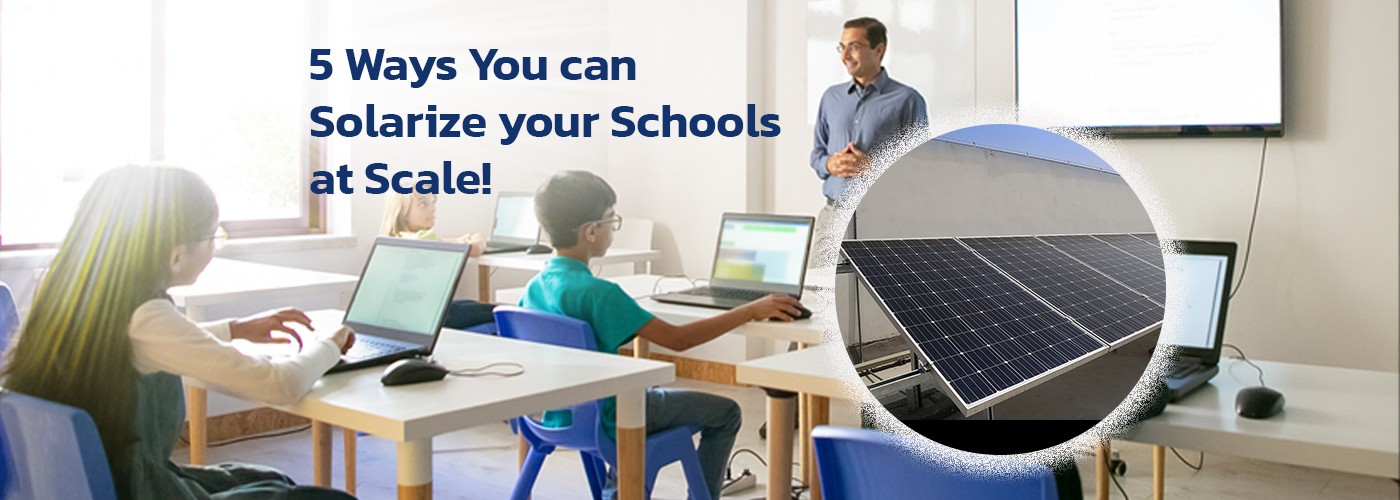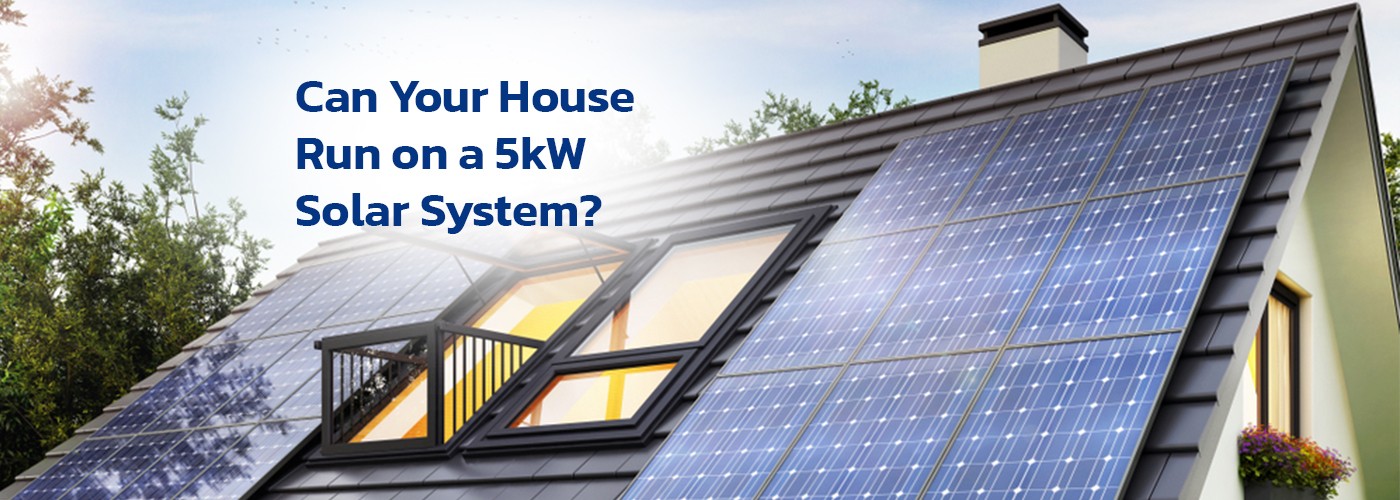5 Ways You Can Solarize Your Schools at Scale!

When this Bangalore school went fully solar, it made waves and raised quite a few eyebrows. Many schools are exploring the installation of new solar power systems as solar energy becomes more inexpensive. Solar power has been shown to be a more cost-effective and environmentally friendly alternative energy source during the last few decades. Energy costs for K-12 schools cost taxpayers billions and billions of dollars per year. Furthermore, institutional energy expenses are anticipated to be pretty high than what is actually required for day-to-day operations. As a consequence, many schools and educational institutions are employing solar energy systems as a permanent cost-cutting approach.
Why Should Schools Implement Solar?
Academies are an essential aspect of any community because they provide a safe environment for students to study and grow. When a school decides to explore solar energy and sustainable energy, it is setting a precedent for the general populace to follow. Solar energy reduces the building’s dependency on conventional (and pricier) power sources in the long run. Schools can devote their finances to other objectives, such as better instructional programs or community improvement projects, by lowering power expenses.
However, switching to solar energy does not always imply that a school will use less energy. Solar energy, on the other hand, allows schools to use fewer fossil fuels, which are more expensive and have a detrimental influence on the environment. While the initial expenditures of opening a larger school will undoubtedly be high, the savings will more than compensate for the initial outlay. In addition, schools can use a variety of financing alternatives to cover the upfront costs of installing integrated solar power systems.
Benefits of Going Solar for Education Institutions
1) Proper Utilization of Flat Roofs through Solar
The fact that many homes do not have ideal roofs or placement types for solar makes a PV installation less expensive and is a barrier for the residential solar business. The usual school layout is suitable for a solar installation due to flat roofs that provide lots of shade-proof space for the installation. The material of a building’s roof and the angle of its roof can have a big impact on solar panel output and efficiency, which is why this compatibility indicator is so crucial.
2) Unlock Substantial Cost-Saving Opportunities
Electricity prices have risen steadily over the last decade, and the cost of electricity is anticipated to rise further in the future. Going on the autonomous path and installing solar to generate autonomous electricity from the school’s rooftop is an obvious method to take control of energy expenditures. Solar may significantly contribute to savings for a school when you combine this commercial-scale benefit with the fact that educational institutions are always seeking ways to decrease operational expenses and lower tuition dues.
3) Make a Sustainable-First Statement
These days, students seek schools that champion green policy and sustainable practices, making solar-powered universities a very appealing alternative. A large solar array on a school’s roof is a simple approach to developing a green power brand and gives students an edge when choosing between two universities with similar attractiveness. Furthermore, schools are connected with innovation, thus having the newest, most environmentally friendly, and most efficient kind of energy will undoubtedly establish confidence that a school is actually advanced.
5 Ways You Can Solarize Your Schools at Scale
5 ways where you can solarize your School with An Optimum Solar Solution.
1) Solar panel Installation on the Roof
Nowadays many schools have plenty of roof space available for solar panels to be installed. Solar panels can be installed on any roof that is structurally solid and strong enough to support the weight of the panels while also receiving constant sunshine. The most frequent application of solar installation is a roof mount system. Underneath the roof, electrical conduits are inserted and connected to solar panels put on the roofing framework.
2) Solar Canopy Installation in Parking Lots
Solar panels can be mounted on top of shade structures in parking lots, enabling the school to capture substantial solar energy while protecting automobiles from the sun’s heat. These can be affixed to existent canopies which are strong enough to sustain the panels’ weight. Considering the method necessitates starting from scratch, it’s a high-cost, high-reward solar solution.
3) Earthed Solar Installation
Surfaced systems are analogous to pole-mounted panels for they are connected to metal platforms and installed on flat outer surfaces, like grounds. These are the most convenient and cost-effective solar energy systems to install. Many surface-mounted solar panels can be put on uni-axis or Omni-axis systems that move in tandem with the sun’s rotation, allowing them to absorb more solar energy across the day.
4) Photovoltaic Systems Integrated into Structures
This form of solar panel system is incorporated straight into the framework of a building, as the names suggest. Solar PV systems have previously been installed on building roofs and walls using customized panels or solar tiles, allowing for extended flexibility for schools.
5) Horizontal Blinds for Solar Shade
Solar panel systems can be mounted on canopies and eaves that also provide shade across the campus. Canopies over stadium seats, playgrounds, and other areas on campus that receive a lot of sunshine are examples of this.
How Servotech Can Facilitate Your School’s Solar Requirements?
Servotech is a major player in the solar industry, offering complete sustainable engineering, procurement, and construction Solar EPC services in India. With a successful project footprint covering several government projects, we also have the expertise to actualize solar goals for schools according to their scalability needs.
Conclusion
Schools play a critical role in ensuring that communities across the country and around the world have a bright future. Schools can use solar electricity to power their equipment and facilities and serve as a role model for the rest of the community to follow, by shifting to this clean energy source.
Read also: Ultimate Guide For Solar Panels Maintenance




